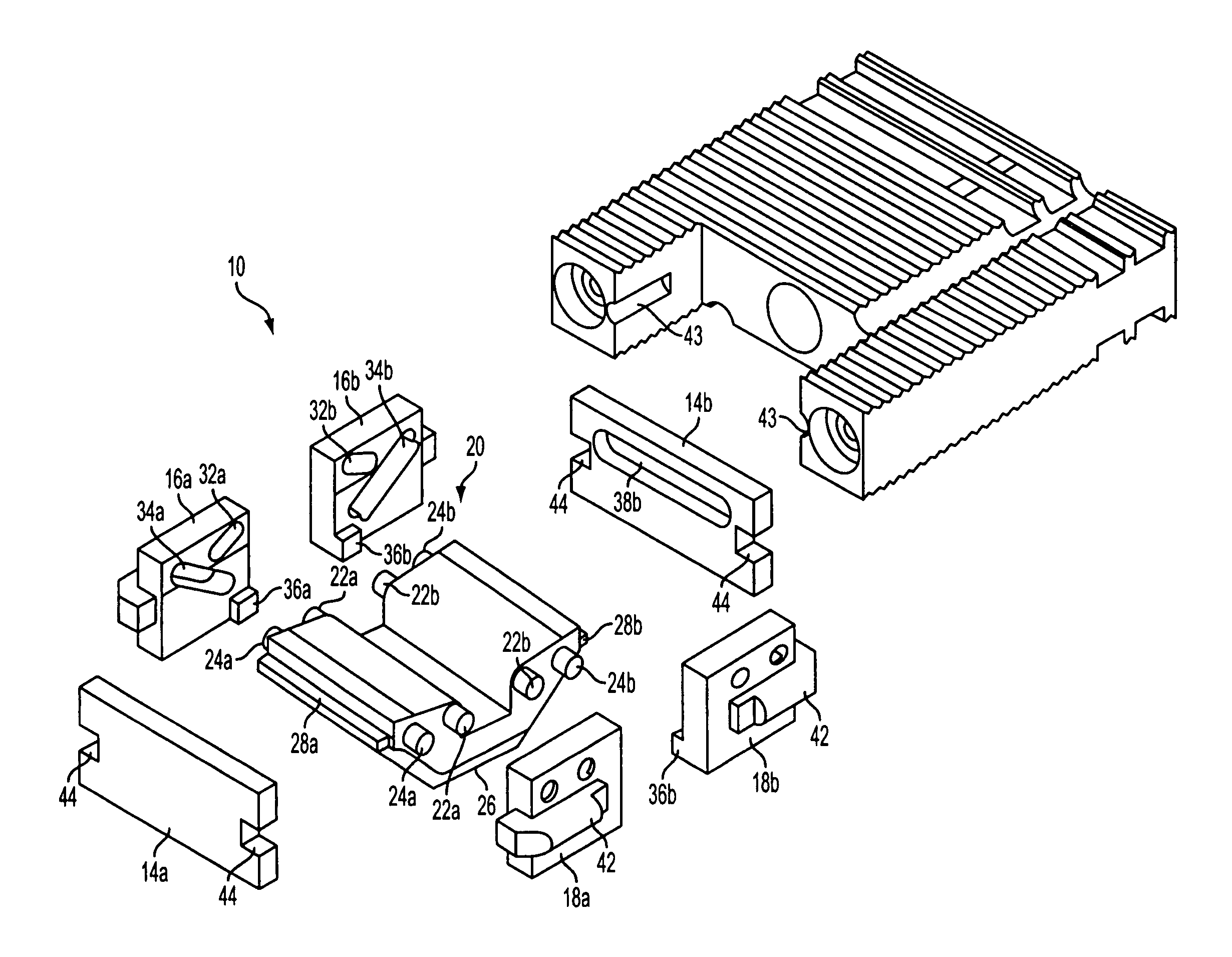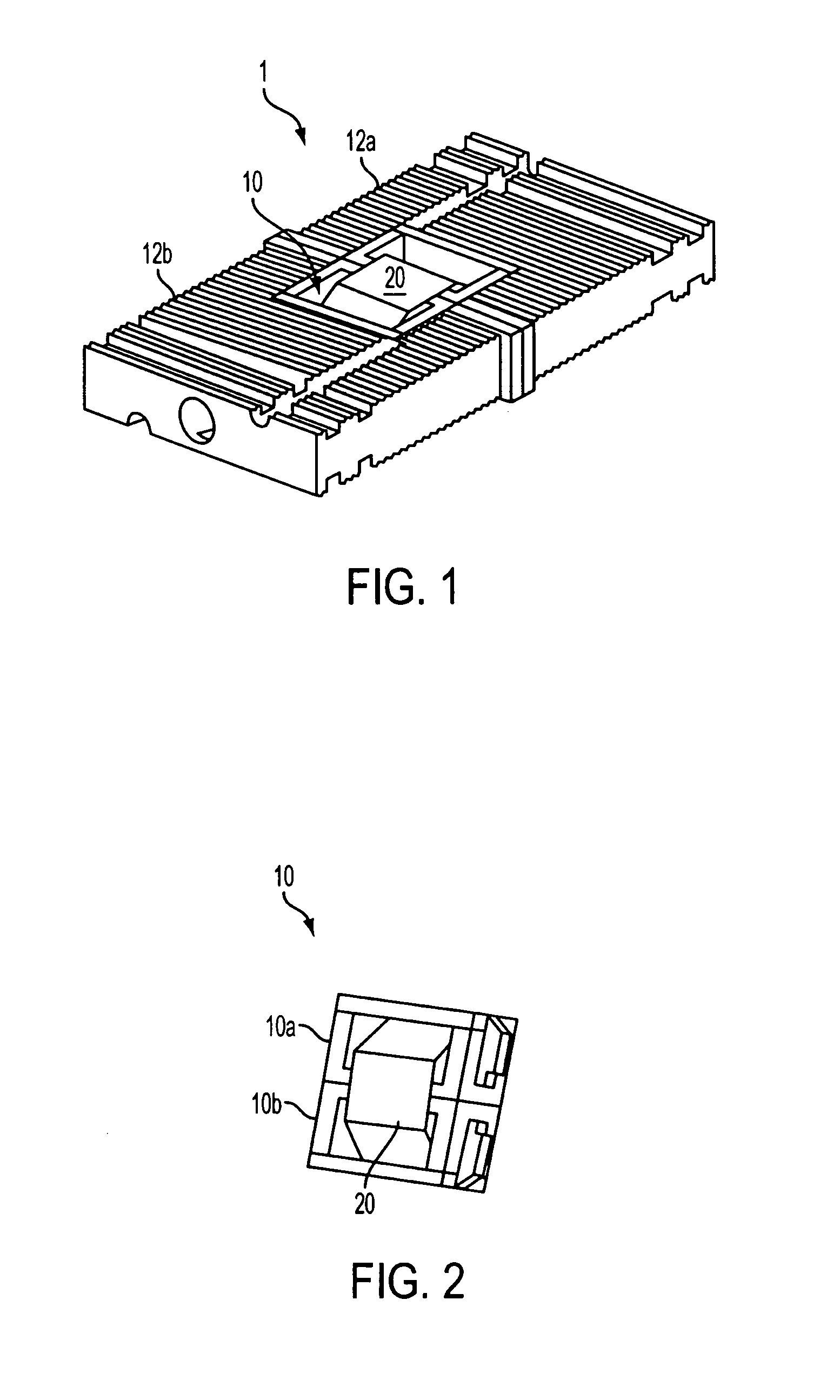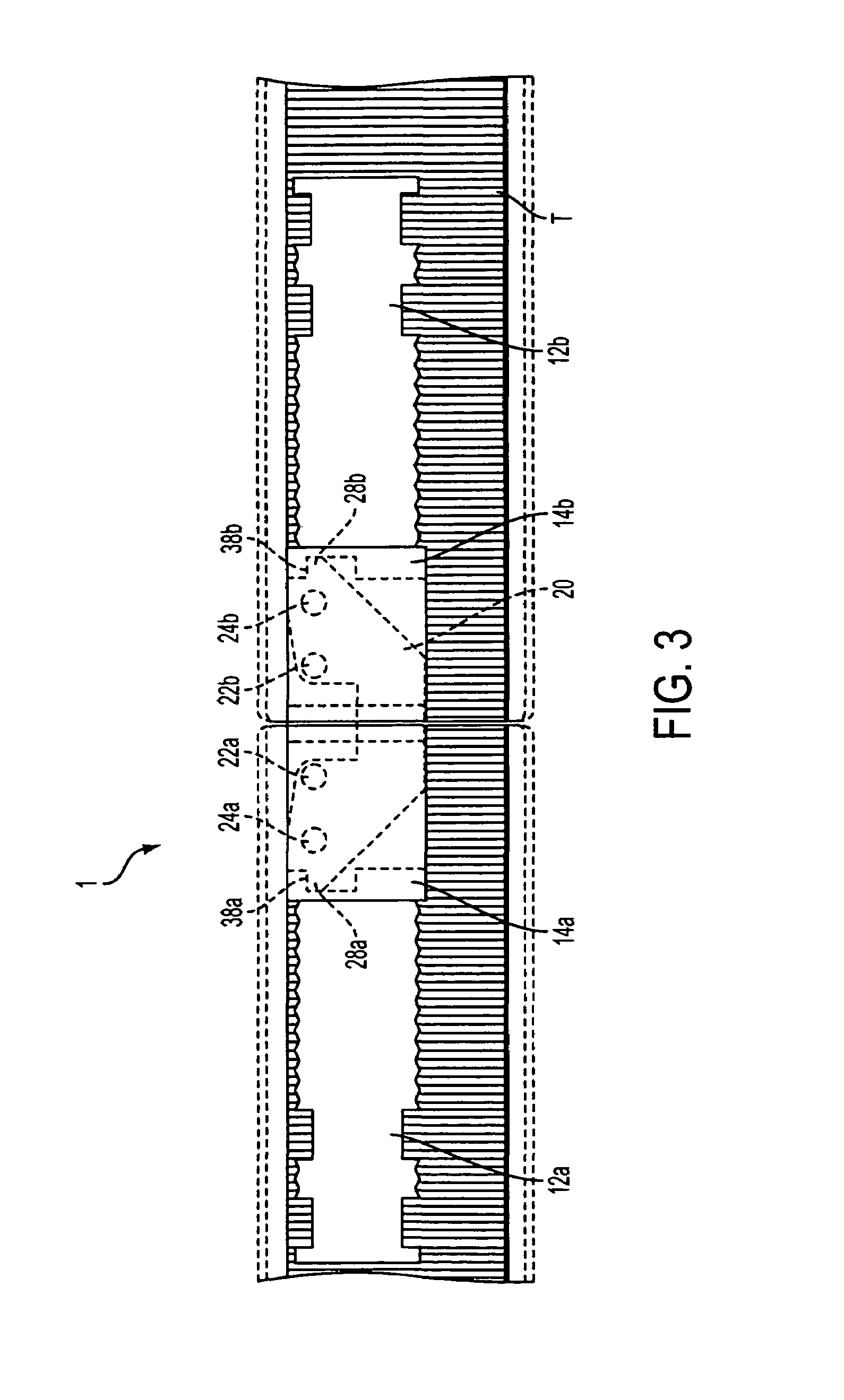Hinge
a hinge and hinge technology, applied in the field of hinges, can solve the problems of difficulty in achieving both objectives, and achieve the effects of reducing the difficulty of adjusting the hinge, increasing the strength of the hinge, and increasing the mechanical advantag
- Summary
- Abstract
- Description
- Claims
- Application Information
AI Technical Summary
Benefits of technology
Problems solved by technology
Method used
Image
Examples
Embodiment Construction
)
[0038]FIGS. 1–7 depict one embodiment of the present invention, with FIGS. 5A and 5B showing two different types of pin restrainers that can be used.
[0039]As shown in FIGS. 1 and 2, hinge cage 10 connects mounting members 12a and 12b. Hinge cage 10 comprises a center link 20 disposed between and pivotally connecting first and second cage portions 10a and 10b (the components of hinge cage 10 are shown in more detail in FIG. 4). The first and second cage portions 10a and 10b are mounted in first and second mounting members 12a and 12b, respectively. The mounting members 12a and 12b can be made of a variety of materials, but in the preferred embodiment are made from 6061 T6511 aluminum. Hinge assembly 1 allows the mounting members 12a and 12b to pivot 180 degrees relative to one another about two dynamic axes of rotation. By “dynamic” it is meant that the axes of rotation move slightly away from each other during the operation of the hinge.
[0040]FIG. 3 is a cross-sectional view of the...
PUM
 Login to View More
Login to View More Abstract
Description
Claims
Application Information
 Login to View More
Login to View More - R&D
- Intellectual Property
- Life Sciences
- Materials
- Tech Scout
- Unparalleled Data Quality
- Higher Quality Content
- 60% Fewer Hallucinations
Browse by: Latest US Patents, China's latest patents, Technical Efficacy Thesaurus, Application Domain, Technology Topic, Popular Technical Reports.
© 2025 PatSnap. All rights reserved.Legal|Privacy policy|Modern Slavery Act Transparency Statement|Sitemap|About US| Contact US: help@patsnap.com



